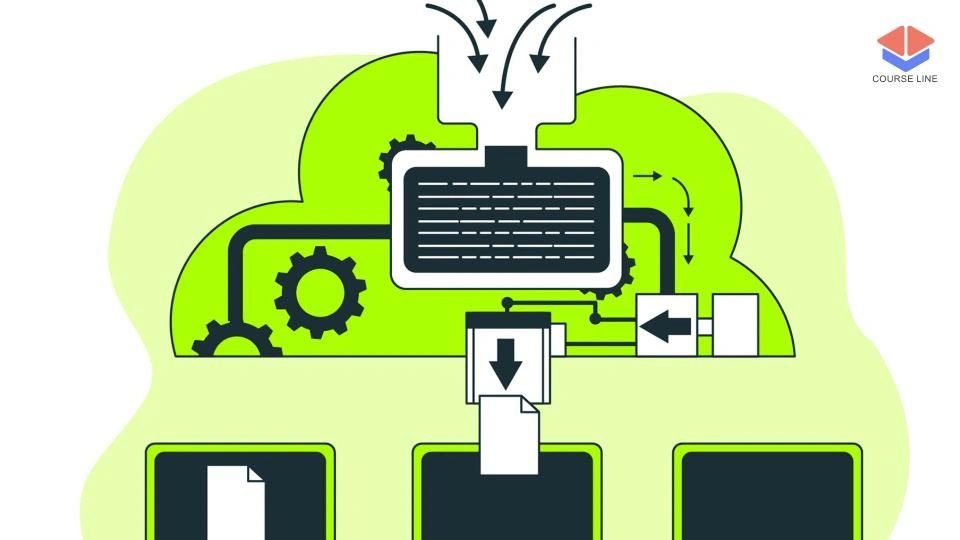Course Features
Price
Study Method
Online | Self-paced
Course Format
Reading Material - PDF, article
Duration
15 minutes
Qualification
No formal qualification
Certificate
At completion
Additional info
Coming soon
- Share
Overview
The Linux command line is a powerful interface that enables efficient system management, scripting, and automation. This course begins with an introduction to basic file commands such as listing, navigating, creating, and removing directories and files, providing a solid foundation for beginners. You will learn essential commands like ls, cd, mkdir, rm, and cp to manage files and directories effectively.
Moving forward, the course explores file compression and permissions, teaching you how to zip and unzip files and control access using the chmod command. User and group management modules cover commands like useradd, groupadd, and usermod, enabling you to administer user accounts and permissions with precision.
You will also dive into file viewing techniques and ownership management using commands like head, tail, chown, and chgrp. Networking commands such as ping, traceroute, ifconfig, and nslookup are thoroughly explained to help you diagnose and configure network settings.
The course includes detailed lessons on file transfer and remote access with wget, ssh, and scp, essential tools for secure data management across networks. System monitoring and user management commands like uptime, uname, and passwd provide insights into system health and security. Finally, process management modules introduce commands like ps, top, and kill, allowing you to monitor and control running processes effectively.
Designed for both beginners and intermediate users, this course balances theory with practical examples to help you gain real-world Linux command line expertise that enhances productivity and system administration capabilities.
Completing this course prepares you for careers in system administration, network engineering, DevOps, cybersecurity, and software development. It provides foundational Linux skills essential for roles such as Linux administrator, support engineer, cloud engineer, and infrastructure specialist, supporting your advancement in the technology sector.
Who is this course for?
The Linux command line is a powerful interface that enables efficient system management, scripting, and automation. This course begins with an introduction to basic file commands such as listing, navigating, creating, and removing directories and files, providing a solid foundation for beginners. You will learn essential commands like ls, cd, mkdir, rm, and cp to manage files and directories effectively.
Moving forward, the course explores file compression and permissions, teaching you how to zip and unzip files and control access using the chmod command. User and group management modules cover commands like useradd, groupadd, and usermod, enabling you to administer user accounts and permissions with precision.
You will also dive into file viewing techniques and ownership management using commands like head, tail, chown, and chgrp. Networking commands such as ping, traceroute, ifconfig, and nslookup are thoroughly explained to help you diagnose and configure network settings.
The course includes detailed lessons on file transfer and remote access with wget, ssh, and scp, essential tools for secure data management across networks. System monitoring and user management commands like uptime, uname, and passwd provide insights into system health and security. Finally, process management modules introduce commands like ps, top, and kill, allowing you to monitor and control running processes effectively.
Designed for both beginners and intermediate users, this course balances theory with practical examples to help you gain real-world Linux command line expertise that enhances productivity and system administration capabilities.
Completing this course prepares you for careers in system administration, network engineering, DevOps, cybersecurity, and software development. It provides foundational Linux skills essential for roles such as Linux administrator, support engineer, cloud engineer, and infrastructure specialist, supporting your advancement in the technology sector.
Requirements
The Linux command line is a powerful interface that enables efficient system management, scripting, and automation. This course begins with an introduction to basic file commands such as listing, navigating, creating, and removing directories and files, providing a solid foundation for beginners. You will learn essential commands like ls, cd, mkdir, rm, and cp to manage files and directories effectively.
Moving forward, the course explores file compression and permissions, teaching you how to zip and unzip files and control access using the chmod command. User and group management modules cover commands like useradd, groupadd, and usermod, enabling you to administer user accounts and permissions with precision.
You will also dive into file viewing techniques and ownership management using commands like head, tail, chown, and chgrp. Networking commands such as ping, traceroute, ifconfig, and nslookup are thoroughly explained to help you diagnose and configure network settings.
The course includes detailed lessons on file transfer and remote access with wget, ssh, and scp, essential tools for secure data management across networks. System monitoring and user management commands like uptime, uname, and passwd provide insights into system health and security. Finally, process management modules introduce commands like ps, top, and kill, allowing you to monitor and control running processes effectively.
Designed for both beginners and intermediate users, this course balances theory with practical examples to help you gain real-world Linux command line expertise that enhances productivity and system administration capabilities.
Completing this course prepares you for careers in system administration, network engineering, DevOps, cybersecurity, and software development. It provides foundational Linux skills essential for roles such as Linux administrator, support engineer, cloud engineer, and infrastructure specialist, supporting your advancement in the technology sector.
Career path
The Linux command line is a powerful interface that enables efficient system management, scripting, and automation. This course begins with an introduction to basic file commands such as listing, navigating, creating, and removing directories and files, providing a solid foundation for beginners. You will learn essential commands like ls, cd, mkdir, rm, and cp to manage files and directories effectively.
Moving forward, the course explores file compression and permissions, teaching you how to zip and unzip files and control access using the chmod command. User and group management modules cover commands like useradd, groupadd, and usermod, enabling you to administer user accounts and permissions with precision.
You will also dive into file viewing techniques and ownership management using commands like head, tail, chown, and chgrp. Networking commands such as ping, traceroute, ifconfig, and nslookup are thoroughly explained to help you diagnose and configure network settings.
The course includes detailed lessons on file transfer and remote access with wget, ssh, and scp, essential tools for secure data management across networks. System monitoring and user management commands like uptime, uname, and passwd provide insights into system health and security. Finally, process management modules introduce commands like ps, top, and kill, allowing you to monitor and control running processes effectively.
Designed for both beginners and intermediate users, this course balances theory with practical examples to help you gain real-world Linux command line expertise that enhances productivity and system administration capabilities.
Completing this course prepares you for careers in system administration, network engineering, DevOps, cybersecurity, and software development. It provides foundational Linux skills essential for roles such as Linux administrator, support engineer, cloud engineer, and infrastructure specialist, supporting your advancement in the technology sector.
-
-
- Premium Certificate 00:15:00

No Reviews found for this course.
Is this certificate recognized?
Yes, our premium certificate and transcript are widely recognized and accepted by embassies worldwide, particularly by the UK embassy. This adds credibility to your qualification and enhances its value for professional and academic purposes.
I am a beginner. Is this course suitable for me?
Yes, this course is designed for learners of all levels, including beginners. The content is structured to provide step-by-step guidance, ensuring that even those with no prior experience can follow along and gain valuable knowledge.
I am a professional. Is this course suitable for me?
Yes, professionals will also benefit from this course. It covers advanced concepts, practical applications, and industry insights that can help enhance existing skills and knowledge. Whether you are looking to refine your expertise or expand your qualifications, this course provides valuable learning.
Does this course have an expiry date?
No, you have lifetime access to the course. Once enrolled, you can revisit the materials at any time as long as the course remains available. Additionally, we regularly update our content to ensure it stays relevant and up to date.
How do I claim my free certificate?
I trust you’re in good health. Your free certificate can be located in the Achievement section. The option to purchase a CPD certificate is available but entirely optional, and you may choose to skip it. Please be aware that it’s crucial to click the “Complete” button to ensure the certificate is generated, as this process is entirely automated.
Does this course have assessments and assignments?
Yes, the course includes both assessments and assignments. Your final marks will be determined by a combination of 20% from assignments and 80% from assessments. These evaluations are designed to test your understanding and ensure you have grasped the key concepts effectively.
Is this course accredited?
We are a recognized course provider with CPD, UKRLP, and AOHT membership. The logos of these accreditation bodies will be featured on your premium certificate and transcript, ensuring credibility and professional recognition.
Will I receive a certificate upon completion?
Yes, you will receive a free digital certificate automatically once you complete the course. If you would like a premium CPD-accredited certificate, either in digital or physical format, you can upgrade for a small fee.
Course Features
Price
Study Method
Online | Self-paced
Course Format
Reading Material - PDF, article
Duration
15 minutes
Qualification
No formal qualification
Certificate
At completion
Additional info
Coming soon
- Share
Supervisor Training Level 3 Advanced Diploma
Course Line239£490.00Original price was: £490.00.£14.99Current price is: £14.99.ESOL Grammar Mastery: Tenses, Articles & Sentence Structure
Course Line238£490.00Original price was: £490.00.£14.99Current price is: £14.99.Fault Tolerant Systems Engineering Level 3 Advanced Diploma
Course Line237£490.00Original price was: £490.00.£14.99Current price is: £14.99.





